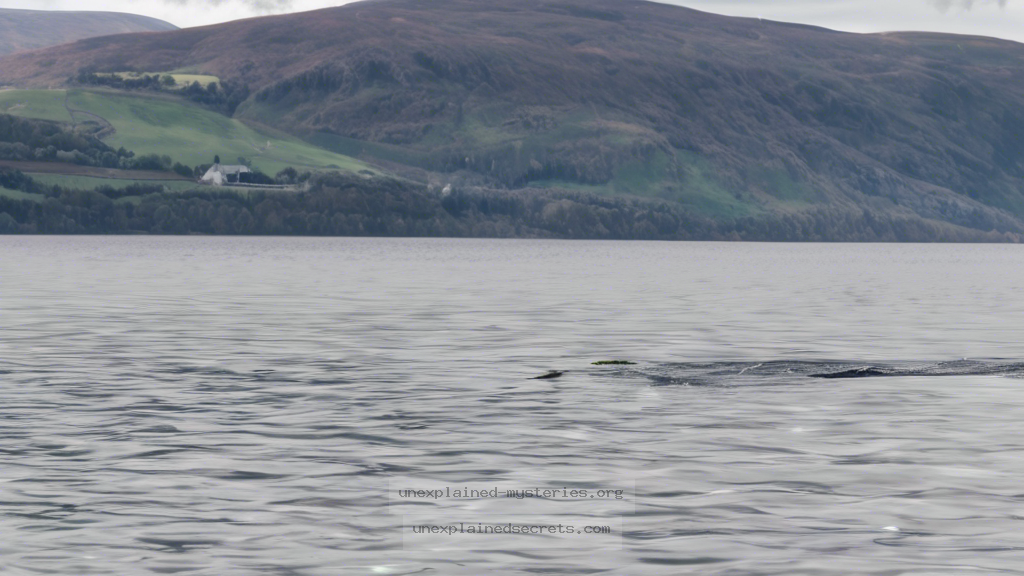What Can Sonar Detections Reveal About the Loch Ness Monster Mystery?
What Can Sonar Detections Reveal About the Loch Ness Monster Mystery?
The Loch Ness Monster, often affectionately dubbed “Nessie,” has captivated the imaginations of countless individuals over the decades, becoming a symbol of mystery and intrigue in the realm of cryptozoology. Among the various methods employed to investigate this legendary creature, sonar technology has emerged as a crucial tool. This blog post explores the fascinating world of sonar detections in relation to the Loch Ness Monster, delving into the historical context, scientific theories, practical implications, and ongoing research surrounding this enigma. By examining sonar data, we attempt to unravel the truth behind the elusive Nessie. 💡
Historical Context of the Loch Ness Monster
The lore surrounding the Loch Ness Monster dates back to ancient times, with the first recorded sighting occurring in the 6th century when St. Columba purportedly encountered a “water beast” in the loch. However, modern interest surged in the 1930s when a photograph known as the “Surgeon’s Photo” captured what appeared to be a large creature in the waters of Loch Ness. Since then, numerous sightings and claims have fueled speculation about Nessie’s existence.
As technology advanced, researchers began employing sonar equipment to probe the depths of Loch Ness, seeking evidence of the creature. The advent of sonar in the 20th century allowed for more systematic investigations, leading to a blend of folklore and science that continues to intrigue both skeptics and believers alike. Understanding this historical context is vital in appreciating the significance of sonar as a tool in the quest for Nessie.
Core Concepts of Sonar Technology
Sonar, an acronym for Sound Navigation and Ranging, operates by emitting sound waves and analyzing their echoes as they bounce off objects in the water. There are two primary types of sonar: active sonar and passive sonar. Active sonar sends out sound pulses and listens for echoes, while passive sonar only listens for sounds made by objects in the environment.
In the context of Loch Ness, researchers primarily utilize active sonar to detect submerged objects. This method allows scientists to create detailed maps of the loch’s underwater topography and identify anomalies that could potentially indicate the presence of large creatures. The depth and murkiness of Loch Ness, combined with its significant size—approximately 23 miles long and 755 feet deep—pose unique challenges for sonar exploration.
Key Features of Sonar Detection:
- Detects submerged objects by sending sound waves.
- Can create underwater topographical maps.
- Effective in murky water conditions.
Notable Sonar Expeditions and Findings
Numerous expeditions have employed sonar technology to search for Nessie, each contributing to the ongoing dialogue about the creature’s existence. One of the most significant undertakings was the 1972 “Nessie Hunt,” led by the Loch Ness Investigation Bureau. Using sonar equipment, researchers detected several unidentified objects in the loch, which sparked further speculation regarding their origins.
Another notable expedition occurred in 2003 when a team from the University of Bristol, led by Dr. Neil Gemmell, used advanced sonar technology to analyze the loch’s depths. Their findings revealed numerous large objects at various depths, but the team concluded that these were likely not biological entities but rather geological formations or debris.
In 2018, a more comprehensive survey was conducted using state-of-the-art sonar scanning technology. The team deployed a remotely operated underwater vehicle equipped with sonar and cameras. The results revealed many intriguing sonar returns but failed to provide definitive evidence of a large creature.
Scientific Theories Regarding Nessie’s Existence
While sonar detections have yielded intriguing results, the scientific community remains divided on the existence of the Loch Ness Monster. Various theories abound regarding what Nessie might be, should it exist. Some of the most prominent include:
- Plesiosaur Hypothesis: This theory proposes that Nessie is a surviving species of marine reptile from the age of dinosaurs. Proponents argue that the loch could provide a suitable habitat for such creatures.
- Giant Eel Theory: Some researchers suggest that Nessie could be a gigantic eel, which could explain sightings of long, serpentine creatures. This theory is bolstered by the presence of large eels in the loch.
- Log or Debris Theory: Skeptics often argue that many sightings can be attributed to floating logs or other debris, which may resemble a creature in the water.
Practical Implications of Sonar Detections
The use of sonar technology in the quest for Nessie has several practical implications. Firstly, it has provided a means for researchers to gather valuable data about the loch’s ecosystem and topography, contributing to our understanding of freshwater habitats. Additionally, sonar expeditions have attracted tourists and enthusiasts, boosting local economies.
Moreover, sonar technology offers non-invasive methods of investigation, allowing researchers to explore without disrupting the natural environment. This is particularly important in a location as ecologically sensitive as Loch Ness, where preserving the habitat is paramount.
Practical Benefits of Sonar Research:
- Non-invasive investigation methods.
- Valuable ecological and topographical data.
- Attracts tourism, benefiting local economies.
Alternative Perspectives on Nessie
While many people are fascinated by the idea of the Loch Ness Monster, alternative perspectives exist that challenge the notion of its existence. Skeptics argue that many sightings can be attributed to misidentifications, hoaxes, or even psychological phenomena such as pareidolia, where the brain interprets random patterns as familiar objects.
Additionally, some scientists contend that the media’s portrayal of Nessie has perpetuated myths rather than fostering a scientific approach to understanding the loch’s ecology. They emphasize the need for skepticism and critical thinking when approaching claims of paranormal phenomena. This perspective highlights the importance of rigorous scientific inquiry over anecdotal evidence.
Common Misconceptions About Loch Ness Monster Research
As with any cryptozoological endeavor, misconceptions abound regarding the Loch Ness Monster and sonar research. Some common myths include:
- All sonar detections are evidence of Nessie: Not all sonar returns indicate biological entities; many can be attributed to geological formations or debris.
- Sonar can definitively prove Nessie’s existence: While sonar can provide valuable data, it cannot conclusively prove or disprove the existence of a creature without further evidence.
- Sonar technology is infallible: Sonar readings can be influenced by various factors, including water conditions, which may lead to false positives or inaccuracies.
Clarifying Misconceptions:
- Sonar data requires careful interpretation.
- Critical thinking is essential in cryptozoology.
- Not all anomalies indicate living creatures.
Best Practices for Investigating Loch Ness
For those interested in investigating the Loch Ness Monster or conducting sonar research, several best practices should be considered:
- Collaboration with Experts: Working with marine biologists and sonar specialists can enhance the quality of research and data interpretation.
- Use Multiple Methods: Combining sonar with other investigative techniques, such as underwater photography and environmental DNA sampling, can provide a more comprehensive understanding of the loch.
- Maintain Objectivity: Approach research with a critical mindset and be willing to accept findings that may challenge preconceived notions.
Future Developments in Loch Ness Research
The future of Loch Ness research holds promise as technology continues to advance. Innovations in underwater robotics, such as autonomous underwater vehicles (AUVs), could facilitate more extensive and detailed explorations of the loch’s depths. Furthermore, the application of environmental DNA (eDNA) analysis may provide insights into the biodiversity of Loch Ness, potentially revealing previously unknown species.
As public interest in the Loch Ness Monster persists, funding for scientific expeditions may increase, allowing for more rigorous investigations. The integration of citizen science initiatives could also engage the local community and enthusiasts, fostering a collaborative approach to uncovering the mysteries of Nessie.
Conclusion: The Ongoing Mystery of the Loch Ness Monster
In conclusion, sonar detections offer intriguing insights into the mystery of the Loch Ness Monster, providing valuable data while also raising more questions than answers. Historical contexts, scientific theories, practical implications, and ongoing research all contribute to a multifaceted understanding of this phenomenon. While sonar technology has not yet definitively proven the existence of Nessie, it continues to spark curiosity and exploration in the depths of Loch Ness. As we look to the future, the quest for answers remains alive, reminding us that some mysteries may never be fully solved—but that they are worth exploring nonetheless. ✅
Other Articles
Recent Posts
- What Happened to Flight MH370? The Conspiracy Theories That Still Haunt Us
- What Secrets Lurk Within the Walls of the Infamous Trans-Allegheny Lunatic Asylum?
- What Evidence Supports the Existence of Bigfoot in the Pacific Northwest?
- What Happened to the Indus Valley Civilization? Unraveling the Mysteries of Ancient Urban Life
- Can Telepathy Be Scientifically Proven Through Laboratory Evidence?







